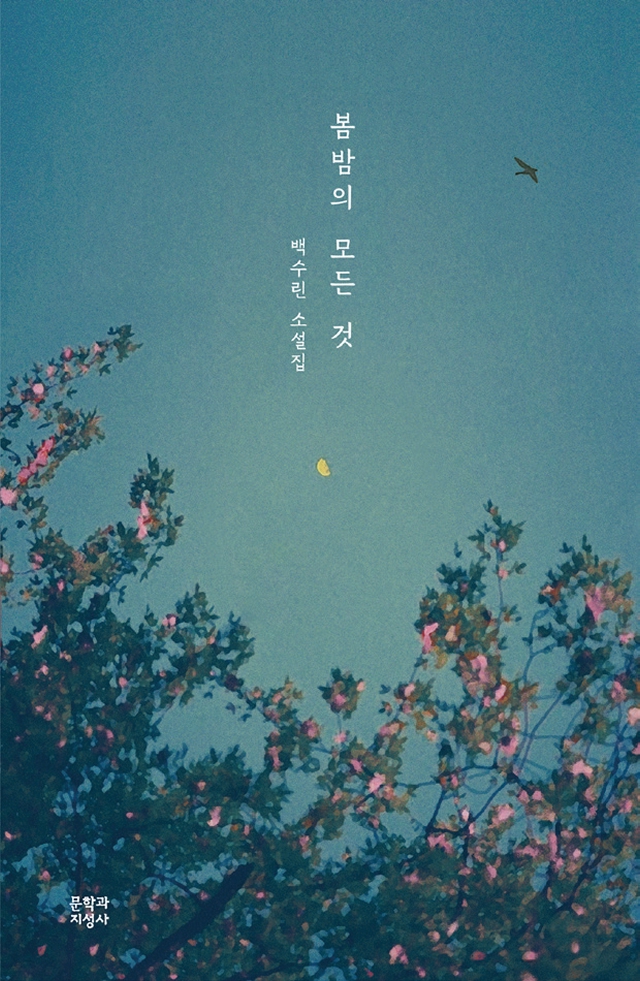
봄밤의 모든 것
- Page
- 268
- Publication Date
- February 28, 2025
- ISBN
- 9788932043500

The ray of sunshine that whispered hope into our young ears.
The characters in All About Spring Night each bear an immense sense of loss.
In “Very Bright Days,” for example, a woman in her seventies named Okmi has
long been estranged from her daughter. One day, his son-in-law makes a surprise
visit with a parrot and asks her to foster the bird until her grandchildren grow to
become less scared of it. As Okmi warms up to her new feathery housemate,
she reminisces about her past and her daughter’s childhood. Baik’s sentences
delicately describe how the rekindled warmth comes unexpectedly as a present
to the winter of Okmi’s life.
Forming a triptych toward the end of the collection, “Heavy Rain,” “It’s Snowing,”
and “What Could That Have Been?” delve even deeper into the sense of loss.
In “Heavy Rain,” Sohee is a homemaker who loves going to the library and
watching the seasons change. After noticing the pile of miscellaneous objects by
the blue gate of an old house outside of her apartment complex, she can’t fall
asleep, haunted by the thought of the old man who used to live there. Death is
omnipresent, and loss is like a shadow that follows us everywhere.
“It’s Snowing” begins with a recollection of Dahye, Sohee’s friend from college.
During college, Dahye stayed with a distant relative to save on rent. Years after
her passing, the memory of the times she spent with the old lady suddenly floods
Dahye’s head. From Baik’s blueprint of loss and absence emerge the heavy
hearts that can no longer take death lightly. “What Could That Have Been?” is
an omnibus chapter in which each of the four characters shares her own account
of a mysterious event that happened 11 years ago in Germany. Now in their
forties, the four friends are on vacation together at a resort, where they have
a long conversation about the past and deaths. Still hoping for a miraculously
unscathed resurgence from the meaninglessness of life marching toward death,
they wish a new spring for everyone enduring the long night of loss and apathy.